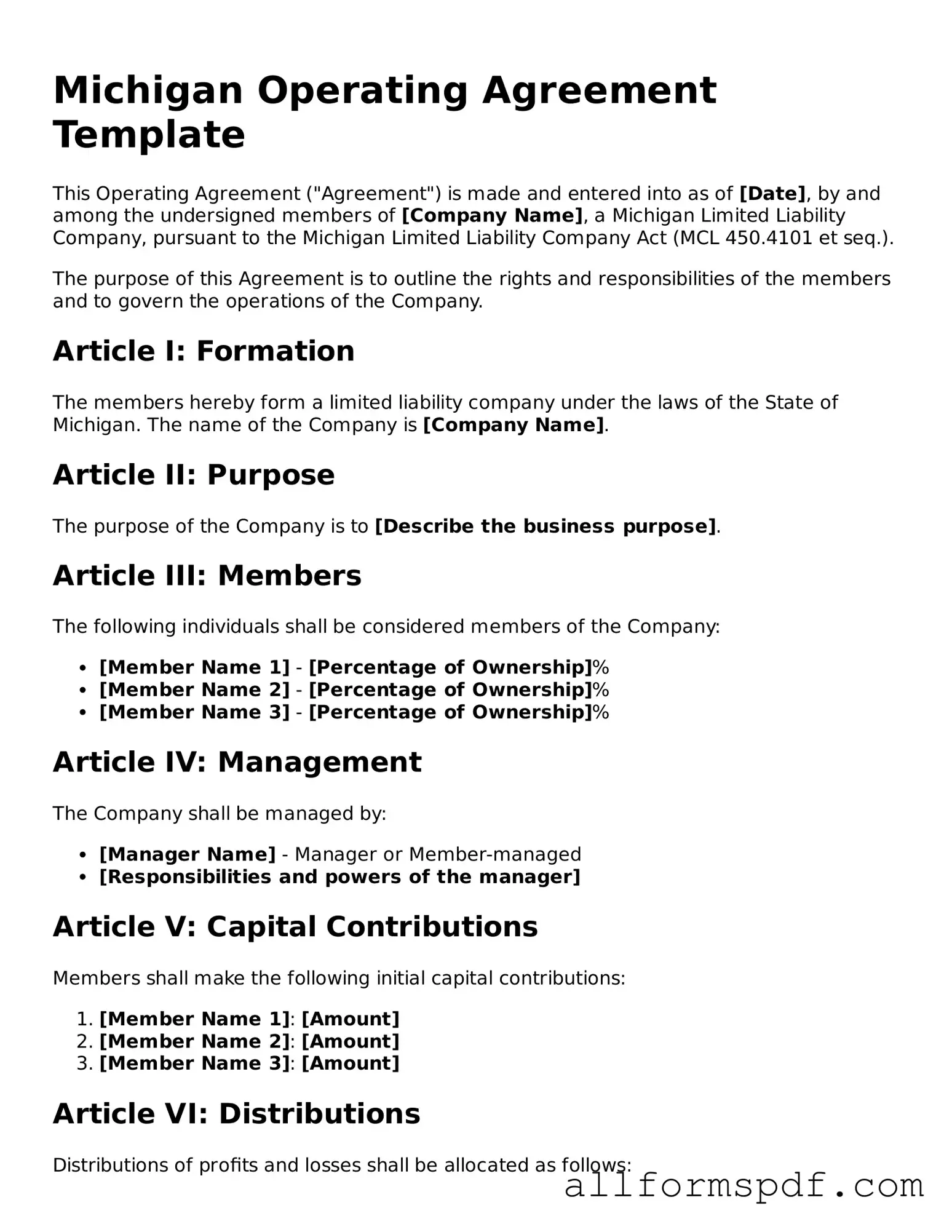Filling out the Michigan Operating Agreement form can be a critical step for business owners. However, several common mistakes can lead to complications down the line. Understanding these pitfalls can help ensure that the form is completed accurately.
One frequent error is incomplete information. Many individuals neglect to fill in all required fields, which can result in delays or even rejection of the agreement. It’s essential to provide all necessary details, including the names of members and their respective roles within the company.
Another common mistake is using vague language. Clear and precise language is crucial in legal documents. Ambiguities can lead to misunderstandings among members or disputes in the future. Ensure that all terms are well-defined and specific to avoid potential conflicts.
Some individuals also overlook the importance of signature requirements. Each member must sign the agreement for it to be valid. Failing to obtain all necessary signatures can render the document ineffective. Always double-check that all required parties have signed before submitting.
Additionally, individuals often forget to include an effective date. The absence of this date can create confusion about when the agreement takes effect. Including a clear effective date helps establish a timeline for the agreement’s terms.
Another mistake involves not reviewing state laws that may affect the agreement. Each state has specific regulations that govern operating agreements. Failing to comply with Michigan's requirements could lead to legal issues. It is advisable to familiarize oneself with these regulations before finalizing the document.
People sometimes also neglect to update the agreement as necessary. Business structures and member roles can change over time. Keeping the operating agreement current is essential for reflecting the current state of the business and avoiding potential disputes.
Lastly, some individuals fail to consult with professionals when drafting the agreement. While it may seem straightforward, the complexities of business law can be overwhelming. Seeking advice from a legal professional can help ensure that the agreement meets all necessary legal standards and protects the interests of all members.
